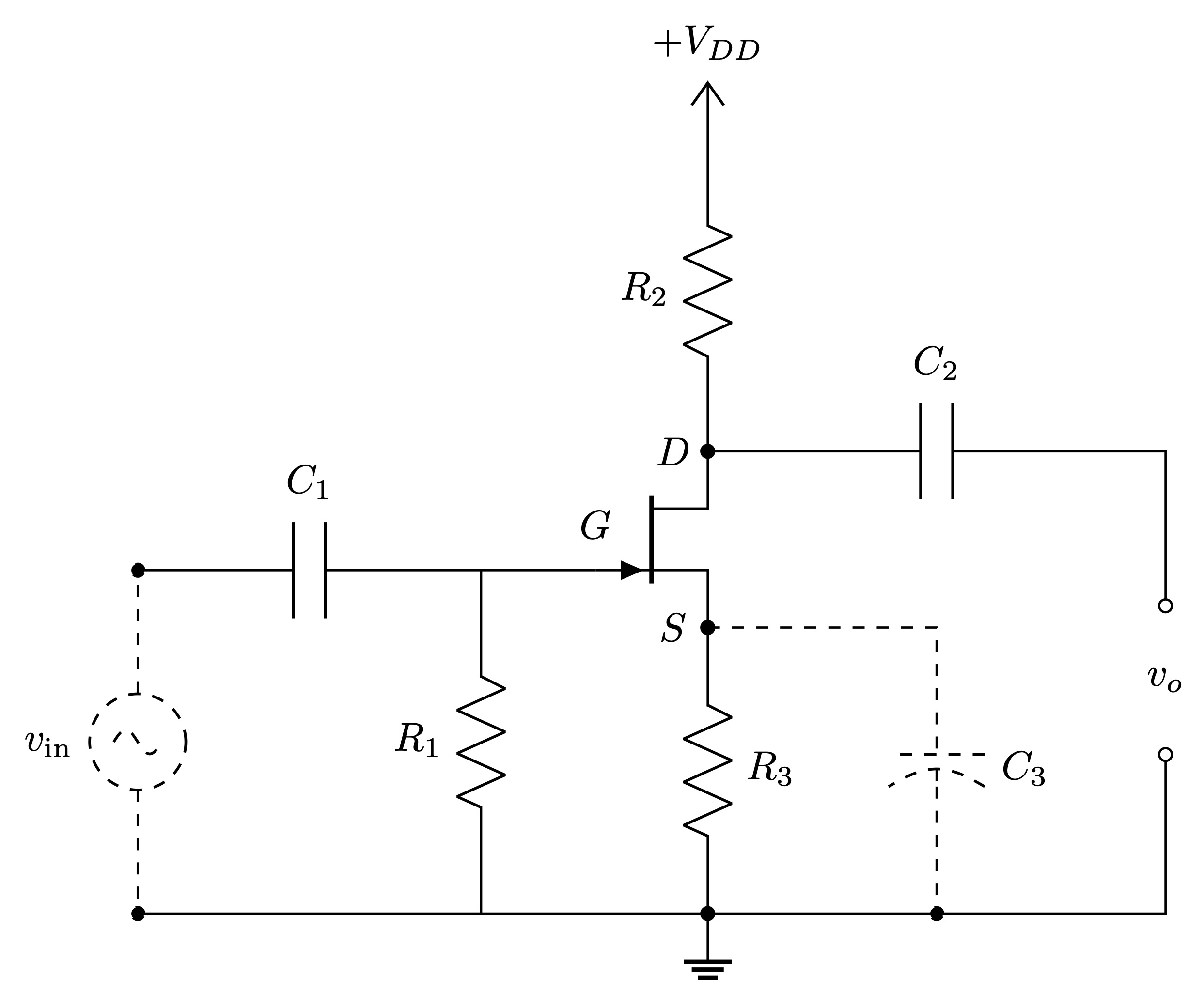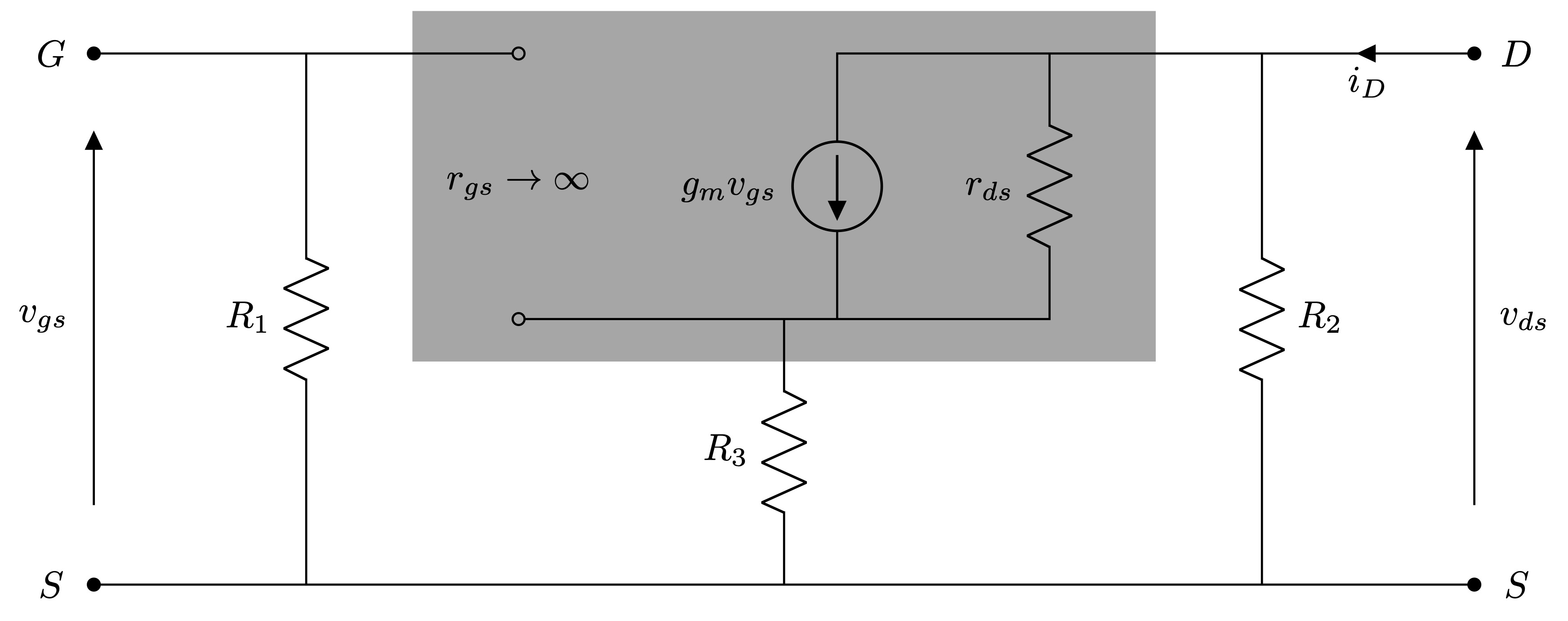\documentclass[border=50pt, tikz]{standalone}
% Circuits
\usepackage[european,s traightvoltages, RPvoltages, americanresistor, americaninductors]{circuitikz}
\tikzset{every picture/.style={line width=0.2mm}}
% Tikz Library
\usetikzlibrary{calc}
% Bipoles Specifications
\ctikzset{bipoles/thickness=1.2, label distance=1mm, voltage shift = 1}
\def\nu{10}
\definecolor{myblue}{HTML}{ABDCEC}
\begin{document}
\begin{tikzpicture}
\begin{circuitikz}
\ctikzset{voltage/american plus/.initial={}, voltage/american minus/.initial={}}
% %Grid
% \draw[thin, dotted] (0,0) grid (\nu,\nu);
% \foreach \i in {1,...,\nu}
% {
% \node at (\i,-2ex) {\i};
% }
% \foreach \i in {1,...,\nu}
% {
% \node at (-2ex,\i) {\i};
% }
% \node at (-2ex,-2ex) {0};
%Coordinates
\node[njfet] (Q) at (5,3.5) {};
% Circuit
\draw
(Q.S) node[shift={(-0.3,0)}] {$S$} to[R, l^=$R_3$, *-*] ++(0,-2.5) node[ground] (GR) {}



